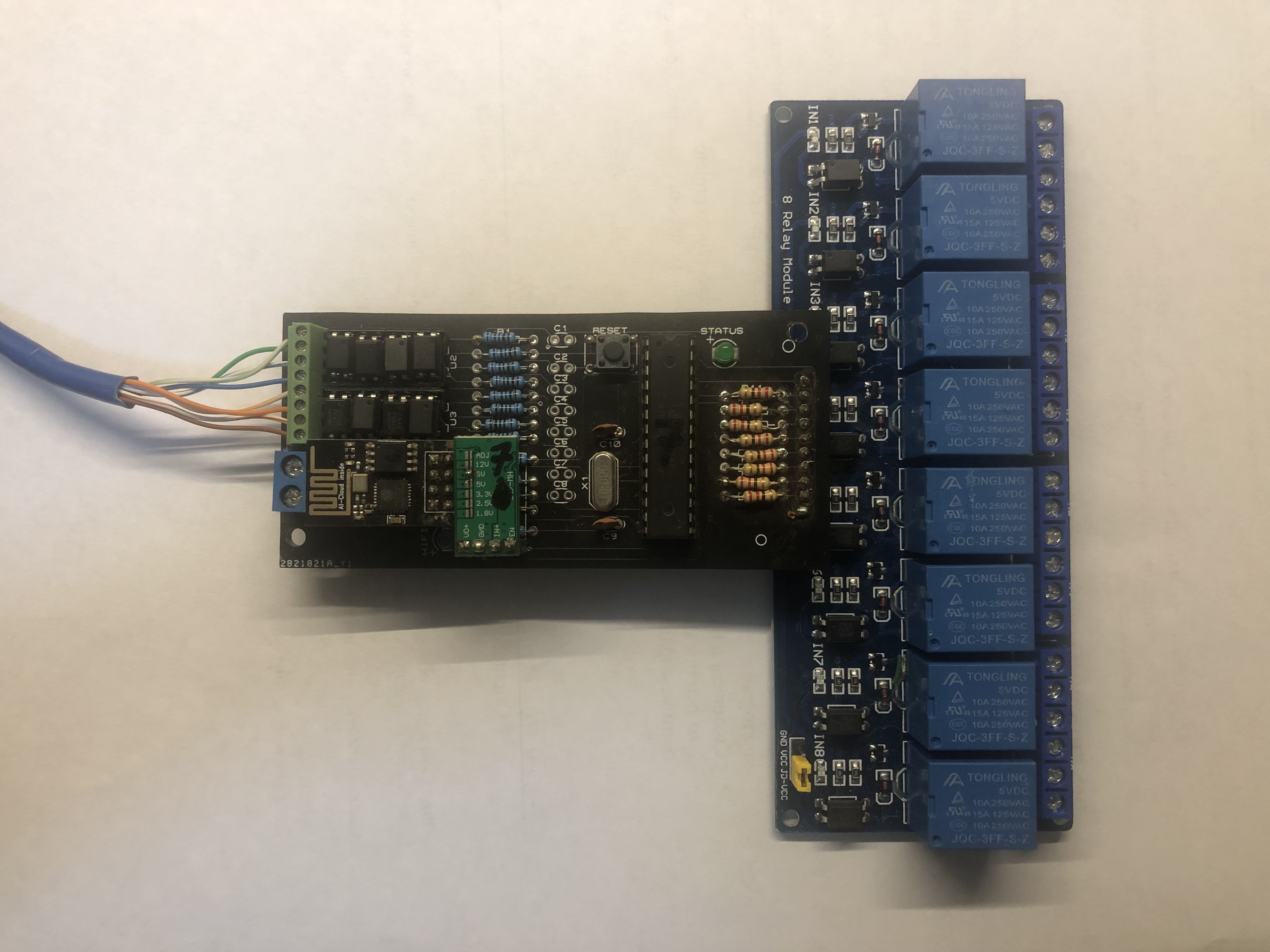DES Line Etching Uniformity Test Report
Published on 7/30/2019 10:35:44 AM
Description
<p style="line-height: 1.5em;"><span style="font-family: Helvetica; font-size: 16px;"><strong>Test </strong><strong>P</strong><strong>urpose:</strong></span></p><p style="line-height: 1.5em;"><span style="font-family: Helvetica; font-size: 16px;"><strong><br/></strong></span></p><p style="line-height: 1.5em;"><span style="font-family: Helvetica; font-size: 16px;">Test the etching uniformity of the DES line, understand the process capability of the device, and prepare for the fine circuit.</span></p><p style="line-height: 1.5em;"><span style="font-family: Helvetica; font-size: 16px;"> </span></p><p style="line-height: 1.5em;"><strong><span style="font-family: Helvetica; font-size: 16px;">Test Conditions:</span></strong></p><p style="line-height: 1.5em;"><strong><span style="font-family: Helvetica; font-size: 16px;"><br/></span></strong></p><p style="line-height: 1.5em;"><span style="font-family: Helvetica; font-size: 16px;">1. Test Plate: a copper plate with a size of 18×24 inches, a copper thickness of 2OZ, and a thickness of 1.6.</span></p><p style="line-height: 1.5em;"><span style="font-family: Helvetica; font-size: 16px;">2. Passing Direction: The passing direction of the test board is parallel to the conveying direction of the etching cylinder.</span></p><p style="line-height: 1.5em;"><span style="font-family: Helvetica; font-size: 16px;">3. Machine Speed: 3.97 m/min; temperature: No.1 Etching - 49.0℃. No.2 Etching - 49.0℃.</span></p><p style="line-height: 1.5em;"><span style="font-family: Helvetica; font-size: 16px;">4. Potion Parameters: total copper 140-180g/l, measured 152.48/l; cuprous </span><span style="font-family: Helvetica; font-size: 16px;">140-180g/l, measured 158g/l; HCL2.5 +/- 1, measured 3.0N; chloride ion 8.52.</span></p><p style="line-height: 1.5em;"><span style="font-family: Helvetica; font-size: 16px;">5. Other Parameters: </span></p><p style="line-height: 1.5em;"><span style="font-family: Helvetica; font-size: 16px;">No.1 Etching Pressures: the upper spray pressure is 27 psi, and the lower spray pressure is 28 psi;</span></p><p style="line-height: 1.5em;"><span style="font-family: Helvetica; font-size: 16px;">No.2 Etching Pressures: the upper spray pressure is 27 psi, and the lower spray pressure is 28 psi;</span></p><p style="line-height: 1.5em;"><span style="font-family: Helvetica; font-size: 16px;">6. Test the copper thickness point: take a slice as a test point, every 2.2 inches in the long direction, every 1.6 inches in the short direction , thus, a total of 11x11=121 test points, shown as below.</span></p><p style="line-height: 1.5em;"><span style="font-family: Helvetica; font-size: 16px;"> </span></p><p style="text-align: center; line-height: 1.5em;"><img src="https://jpfile1.oss-cn-shenzhen.aliyuncs.com/allpcb/web/image/20190730/6370007859577897992477566.png" alt="test point template.png"/><span style="font-family: Helvetica; font-size: 16px;"></span></p><p style="text-align: center; line-height: 1.5em;"><span style="font-family: Helvetica; font-size: 16px;"> </span></p><p style="text-align: justify; line-height: 1.5em;"><strong><span style="font-family: Helvetica; font-size: 16px;">Data Analysis:</span></strong></p><p style="text-align: justify; line-height: 1.5em;"><span style="font-family: Helvetica; font-size: 16px;"> </span></p><p style="text-align: left; line-height: 1.5em;"><strong><span style="font-family: Helvetica; font-size: 16px;">Etching Data Comparison of Upper and Lower Surface</span></strong></p><p style="text-align: left; line-height: 1.5em;"><span style="font-family: Helvetica;"><br/></span></p><p style="text-align: center; line-height: 1.5em;"><span style="font-family: Helvetica;"><img src="https://jpfile1.oss-cn-shenzhen.aliyuncs.com/allpcb/web/image/20190730/6370009898972223353102094.png" alt="etching data comparison of upper and lower surface.png"/></span><br/></p><p style="line-height: 1.5em;"><span style="font-family: Helvetica;"><br/></span></p><p style=";text-align:justify;text-justify:inter-ideograph"><strong style="text-align: left;"><span style="font-family: Helvetica;">Average Copper Etching of Upper and Lower Surface in Horizontal and Vertical Direction</span></strong><br/></p><p style="text-align: center; line-height: 1.5em;"><span style="font-family: Helvetica; text-align: justify;"><br/><img src="https://jpfile1.oss-cn-shenzhen.aliyuncs.com/allpcb/web/image/20190730/6370009900835869137329558.png" alt="average copper etching of upper and lower surface in horizontal and vertical direction.png"/></span></p><p style="line-height: 1.5em;"><span style="font-family: Helvetica; text-align: justify;"> </span><br/></p><p style="text-align: justify; line-height: 1.5em;"><span style="font-family: Helvetica; font-size: 16px;">It can be seen from the table that the etching uniformity of the lower surface is better than that of the upper surface, and there is still a gap between the upper and lower surfaces. There is basically no problem in doing the usual lines, but it will definitely affect the fine lines.</span></p><p style="text-align: justify; line-height: 1.5em;"><span style="font-family: Helvetica; font-size: 16px;"> </span></p><p style="text-align: justify; line-height: 1.5em;"><strong><span style="font-family: Helvetica; font-size: 16px;">The copper surface after etching on the upper and lower surfaces:</span></strong></p><p style="text-align: justify; line-height: 1.5em;"><span style="font-family: Helvetica; font-size: 16px;"> </span></p><p style="text-align: center;"><img src="https://jpfile1.oss-cn-shenzhen.aliyuncs.com/allpcb/web/image/20190730/6370007908702245239313870.jpg" alt="initpintu.jpg"/></p><p style="text-align: justify; line-height: 1.5em;"><span style="font-family: Helvetica; font-size: 16px;"> </span></p><p style="line-height: 1.5em;"><strong><span style="font-family: Helvetica; font-size: 16px;">Etching of Upper Surface in Horizontal and Vertical Direction:</span></strong></p><p style="line-height: 1.5em;"><span style="font-family: Helvetica; font-size: 16px;"> </span></p><p style="line-height: 1.5em; text-align: center;"><img src="https://jpfile1.oss-cn-shenzhen.aliyuncs.com/allpcb/web/image/20190730/6370007951248410195559091.jpg" alt="etching of upper surface in horizontal and vertical direction.jpg"/></p><p style="text-align: justify; line-height: 1.5em;"><strong><span style="font-family: Helvetica; font-size: 16px;"> </span></strong></p><p style="line-height: 1.5em;"><strong><span style="font-family: Helvetica; font-size: 16px;">Etching of Lower Surface in Horizontal and Vertical Direction:</span></strong></p><p style="line-height: 1.5em;"><strong><span style="font-family: Helvetica; font-size: 16px;"> </span></strong></p><p style="line-height: 1.5em; text-align: center;"><img src="https://jpfile1.oss-cn-shenzhen.aliyuncs.com/allpcb/web/image/20190730/6370007954291886439323671.jpg" alt="Etching of Lower surface in horizontal and vertical direction.jpg"/></p><p style="text-align: justify; line-height: 1.5em;"><span style="font-family: Helvetica; font-size: 16px;"> </span></p><p style="text-align: justify; line-height: 1.5em;"><strong><span style="font-family: Helvetica; font-size: 16px;">From the above data analysis, the following conclusions can be drawn:</span></strong></p><p style="text-align: justify; line-height: 1.5em;"><span style="font-family: Helvetica; font-size: 16px;"> </span></p><p style="text-align: justify; line-height: 1.5em;"><span style="font-family: Helvetica; font-size: 16px;">1. The etching uniformity of the lower surface is better than that of the upper surface and is controlled within the same range. This difference is due to the presence of pool effect on the upper surface.</span></p><p style="text-align: justify; line-height: 1.5em;"><span style="font-family: Helvetica; font-size: 16px;">2. Since the etching sway is moving in the left and right direction, the etching uniformity of the horizontal direction of the upper and lower surfaces (perpendicular to the advancing direction) is better than the column direction.</span></p><p style="text-align: justify; line-height: 1.5em;"><span style="font-family: Helvetica; font-size: 16px;">3. The etching uniformity of the DES line is within the capabilities of the device.</span></p><p style="text-align: justify; line-height: 1.5em;"><span style="font-family: Helvetica; font-size: 16px;">4. From the data analysis of the above pictures, the upper and lower pressures are set appropriately, and no nozzles are blocked.</span></p><p style="text-align: justify; line-height: 1.5em;"><span style="font-family: Helvetica; font-size: 16px;"> </span></p><p style="text-align: justify; line-height: 1.5em;"><strong><span style="font-family: Helvetica; font-size: 16px;">Recommendation:</span></strong></p><p style="text-align: justify; line-height: 1.5em;"><span style="font-family: Helvetica; font-size: 16px;"> </span></p><p style="text-align: justify; line-height: 1.5em;"><span style="font-family: Helvetica; font-size: 16px;">1. Using compensation etching, the etching uniformity of the upper and lower surfaces still has a difference of 2%, which allows the supplier to continue to adjust the compensation etching.</span></p><p style="text-align: justify; line-height: 1.5em;"><span style="font-family: Helvetica; font-size: 16px;">2. Due to this unevenness, it is recommended that the plate that is thinned after lamination is preferably not used in DES. On the line, the unevenness of the thinning and the plate plating is discarded at the time of external etching.</span></p><p style="text-align: justify; line-height: 1.5em;"><span style="font-family: Helvetica; font-size: 16px;">3. The difference between the upper and lower surfaces requires further adjustment of the online process, which can be achieved according to the adjustment pressure, the spray time, and the adjustment and compensation etching.</span></p><p style="text-align: justify; line-height: 1.5em;"><br/></p>
104
comment
All comments
 Unknown
Unknown
4838
0
104
Rules about cashback: 1. Valid time: ALLPCB cashback activity will end on April 1st. 2. Capped amount: The capped amount of cashback for each account is $5,000. Each order can get a maximum of $2,000 cashback. That means every author can get $5,000 max. 3. Cashback range: The cashback activity only covers the corresponding PCB order. The order amount for other combined payment products will be invalid. 4. Clicking your own promotional link will be invalid. The same email address, shipping address, contact information, and phone number are all recognized as the same account. 5. ALLPCB has the final interpretation right of the cashback activity.
ALLPCB will donate 2% to the author for this promotion link.

